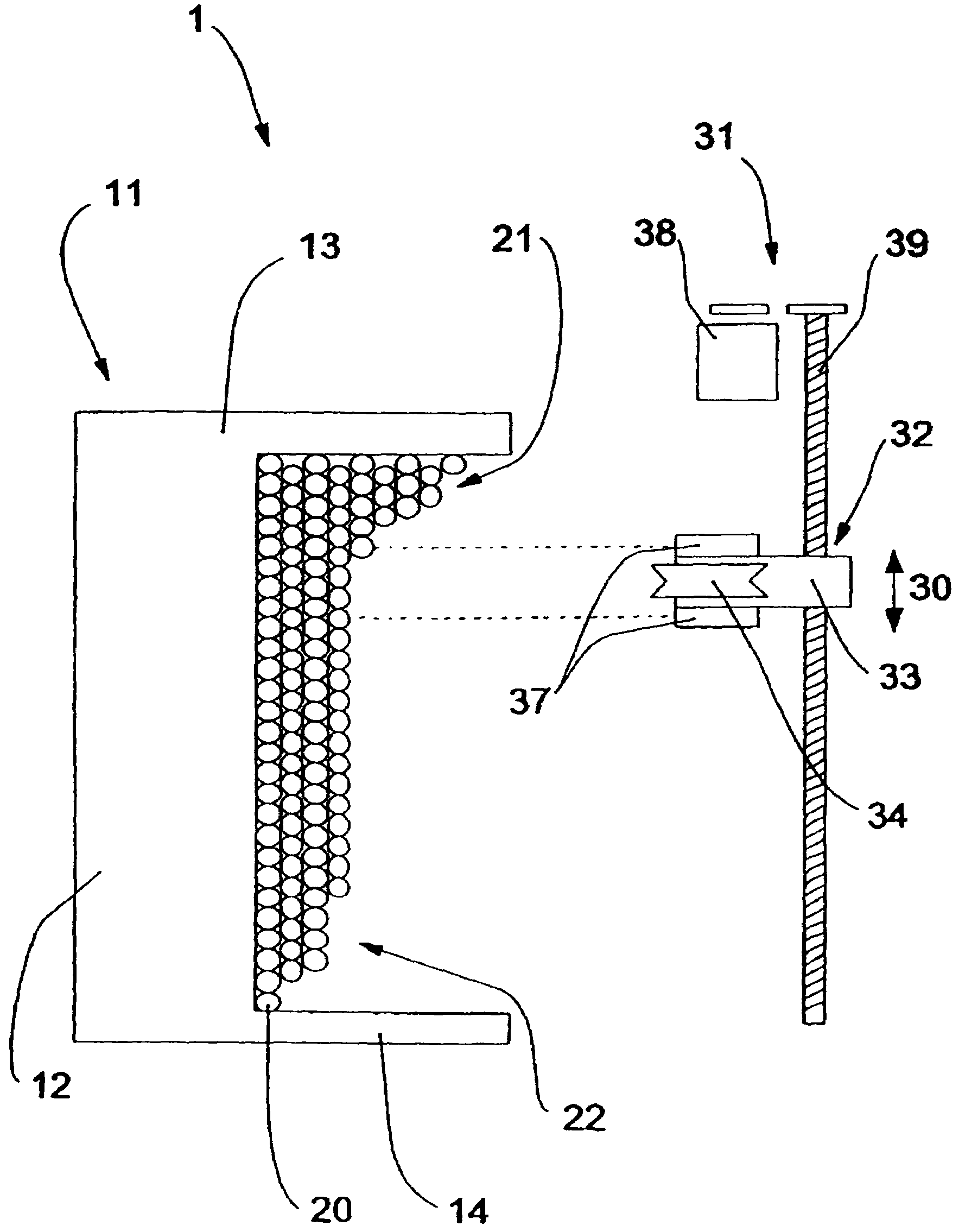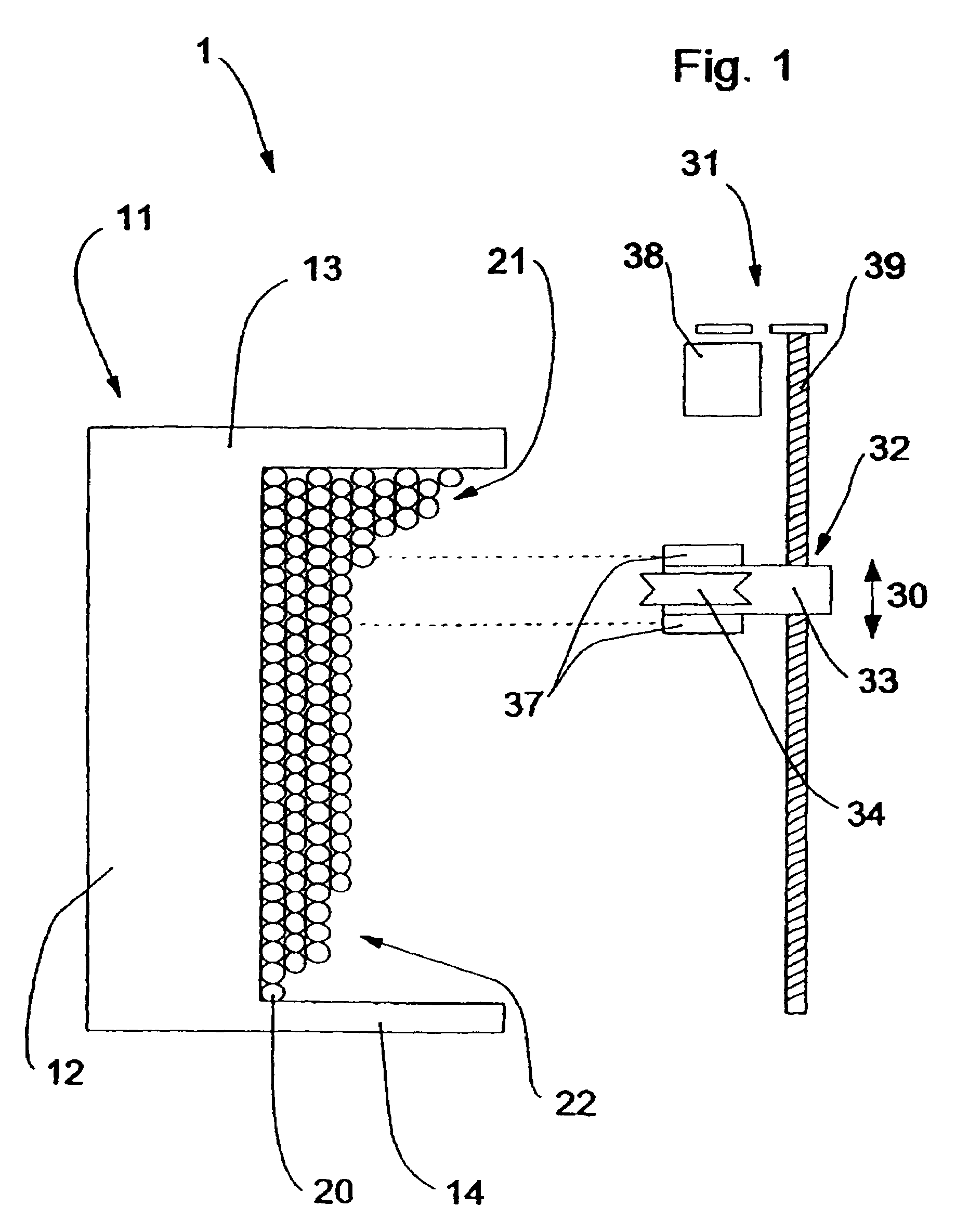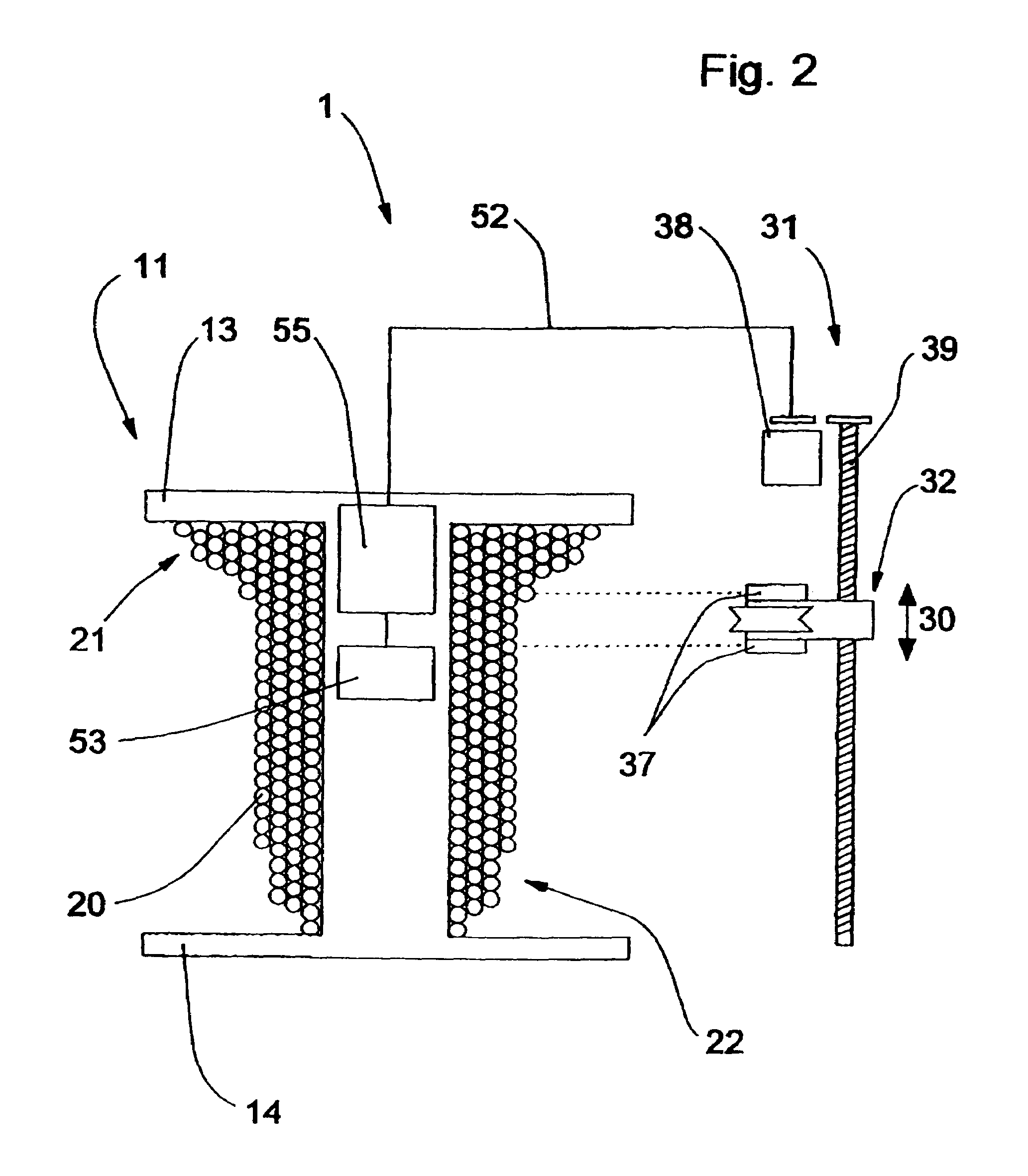Method and device for laying of elongated winding material
a technology of winding material and elongated spool, which is applied in the direction of printing, instruments, transportation and packaging, etc., can solve the problems of affecting the durability of plastic spools, affecting the axial pressure of the spool flange, and deformation of elastically, so as to reduce the winding speed and reduce the rotational speed , the effect of uniform winding pattern
- Summary
- Abstract
- Description
- Claims
- Application Information
AI Technical Summary
Benefits of technology
Problems solved by technology
Method used
Image
Examples
Embodiment Construction
[0034]FIG. 1 shows a schematic cross-section through a winding device 1 for carrying out the method according to the present invention. In the Figure, at the left the right half of a winding spool 11 is shown, made up of spool core 12 and the two flanges 13 and 14, in section. The object of the method according to the present invention is to wind spool core 12 with elongated winding material 20 as uniformly as possible, in order to make optimal use of the winding volume of winding spool 11. In the Figure, the depicted examples of undesirable valleys are designated 22 and the hills are designated 21.
[0035]Laying device 31 is shown at the right in FIG. 1. Laying unit 32 is mounted on a spindle axle 39. A rotational movement of spindle axle 39 clockwise or counterclockwise effects a movement of laying unit 32 in a direction essentially parallel to the spool axis, indicated by double arrow 30. Spindle axle 39 is driven by motor 38. Laying unit 32 has a carriage 33 on which deflecting ro...
PUM
 Login to View More
Login to View More Abstract
Description
Claims
Application Information
 Login to View More
Login to View More - R&D
- Intellectual Property
- Life Sciences
- Materials
- Tech Scout
- Unparalleled Data Quality
- Higher Quality Content
- 60% Fewer Hallucinations
Browse by: Latest US Patents, China's latest patents, Technical Efficacy Thesaurus, Application Domain, Technology Topic, Popular Technical Reports.
© 2025 PatSnap. All rights reserved.Legal|Privacy policy|Modern Slavery Act Transparency Statement|Sitemap|About US| Contact US: help@patsnap.com



